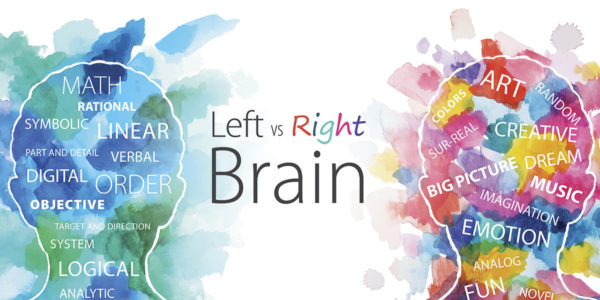First in a Series on Brand Building
There is a quote by Seth Godin that goes like this, “A brand is a set of expectations, memories, stories, and relationships that, taken together, account for a consumer’s decision to choose one product or service over another.”
“If people believe they share values with a company, they will stay loyal to the brand.” -Howard Schultz
Pretty powerful, right? I offer that introduction because far too often, as Chief Creative Officer at Sagon-Phior, I meet with both for-profit and non-profit organizations that are operating under a misconception about what the term “brand” actually means and what “branding” really is.
I have had the honor of working with very strong master brands, including their programs, initiatives, and product families. A few examples include:
Walt Disney Co. • Microsoft • Nestlé • Sony • Carnival Corp & plc • United Way • Agilent • Callaway Golf • Hilton Hotels • Amgen • American Heart Association • Lucasfilm • The Olympic Games • Fox Broadcasting • Warner Bros. • American State Bank • United Nations • Rolls Royce • AT&T • Viacom
These brands have garnered strong reputations and great affinity amongst consumers and supporters because they followed some guidelines and rules, which I am going to share with you in this article. But first, I’ll explain why branding is important, and why it should matter to your organization.
Why Branding Matters
Ultimately, branding is about feeling. It is not only what makes a memorable impression with an audience member but also enables your customers and clients to know what to expect when they interact with your organization.
Branding distinguishes you from competitors, clarifies your product or service offering, and positions you as the premier choice. It is how you are perceived and represented in the hearts and minds of consumers—and what’s more it’s all encompassing.
Your brand is not a logo nor is it an icon. It is not a font, style guide, or a color palette. It is also not a trademark. All of those items are mere symbols and are used in the identification, representation, and protection of your brand—they are individual parts of your brand’s whole.
“Your brand is your promise.”
Branding is critical to an organization because of the impact it makes on your results. When branding is done well, new streams of revenue can be created, audience loyalty is boosted, business value is increased, and you solidify your reputation in the marketplace. However, when done incorrectly, the opposite can occur.
How is a Brand Created?
The process behind brand creation is multi-faceted and comprehensive—and it touches both the internal and external workings of your enterprise. It requires creative rationale alongside targeted analysis regarding what direction you want to go in to get the results you desire.
And to do this, you cannot look, or sound, or feel like anyone else.
Brand Creation Involves:
- Understanding the market, knowing who your audience is and who your competitors are, then pinpointing your own unique white space within this competitive world
- Finding your focus — how only you can do what you do, show what you stand for, and where you fit—then allowing this to inform all the other parts of your brand
- Defining your company’s personality and core attributes through creative brainstorming and crafting words and visuals that resonate
- Creating a vision or mood presentation that offers visualization of the first three bullet points
- Choosing colors, typefaces, brand voice, and imagery that stand out as uniquely yours—and then formulating your style guide to include the usage guidelines to consistently achieve this
- And of course, execution and constant vigilance
The brand creation process is time intensive, research-oriented, and incredibly detailed. Another point that is important: It shouldn’t be rushed through—that’s where mistakes are made.
Branding Doesn’t Happen Overnight
Most organizations don’t have a proper understanding of how long branding takes—but it is important to note that it happens over time, not overnight. What’s more is that it is not a one-and-done activity. It is a long-term investment and should be considered as a living thing that evolves and changes as time passes.
I often tell clients, when you are becoming bored with your new or revised logo, fonts and color palette, don’t change any of it. You are immersed in it, seeing it daily, and you are the most myopic judge of it. I also guarantee that if clients test it with their audience, that is just the point when consumers, constituents and supporters are usually beginning to recognize, remember, and be moved by the brand.
Branding requires precise planning, ongoing analysis, constant market research, testing, listening to your audience, and so much more. While some brands do seem to find overnight success, let me tell you that no one shoots to fame without putting in the hard work.
Finding brand fame is a true art form—and it is the best of the best brands that understand this.
The Art of Making a Brand Famous
During my career, I have acquired decades of experience branding entertainment giants and their properties—from motion pictures to consumer products. And it is from this experience that the 10 Golden Rules of Branding were developed. All successful global brands, political parties, religions, celebrities… even cults… embrace these rules. From the Pope to Lady Gaga, Mercedes to Apple, and Disney to Coca Cola, checking off one through 10 is imperative:
- Diverge: Differentiate your brand from the status quo. Show what makes your brand unique, no matter if it means totally different or simply the same but better.
- Connect: Relate by using aesthetically pleasing, intriguing words and imagery, charismatic characters, and icons.
- Exclude: Nurture the feeling that not just anyone can join, be chosen for, or “get” your brand.
- Include: Create a clear sense of belonging to a special or “chosen” group.
- Advocate: Champion a lucid philosophy or belief system.
- Appreciate: Communicate love and understanding for your audience.
- Mystify: Make your audience members feel that they are more individual because they belong.
- Influence: Be sure that your ideas and thoughts matter to your audience.
- Define: Delineate what you are and what you are not.
- Trust: Never seek to control an outcome or outcomes. Allow opinions, whether they be negative or positive, to work to your favor by using responses to draw attention to your brand.
When all is said and done, your brand should be the center of your audience’s universe, like a proverbial sun—and the electromagnetic energy it radiates will bring loyalists into its orbit… bonding, drawing, and engaging like a powerful force of nature.
Create a Powerhouse Brand
In Part 2 of this series, I will break down individual design components, imagery, colors, messaging, and other important decisions and choices that go into building a recognizable brand. I will then explain the process that is behind the creative ideation that I regularly engage in when collaborating with our clients.
However, in the meantime, if you are looking to learn more about how the team at Sagon-Phior can help your company or organization to establish and sustain a brand that will entice, excite, and stand the test of time, I invite you to connect with me today.
Sagon-Phior has successfully applied this unique practice to many national and global brands in technology, healthcare, banking, lifestyle and non-profit categories. For more information, go to Sagon-Phior.com









